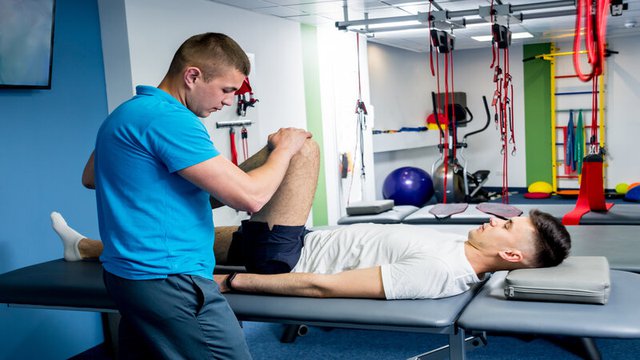

Elite athletes face an extremely competitive world, and with more and more tournaments, matches, and events, many push themselves to the limit to surpass keep ahead or reach their maximum level. This level of demand also brings with it enormous physical pressure that can become a health risk, causing pain or even injuries that, when not properly treated, can lead to the athlete's reorientation towards another sport or the abandonment of sport altogether.
To avoid such problems, physical therapy in sport is an essential tool to help athletes recover as quickly as possible and avoid relapses. As a result, sports physiotherapy is currently one of the areas of greatest professional growth and impact within the sport sector. This means that studying a Physiotherapy degree, master's degree in Sports Physiotherapy, or a Sports Physiotherapy and AI Course will open the door to an exciting world of work.
Physical therapy in sport is a speciality of physiotherapy. It can be applied to elite or amateur athletes. It has several objectives, but the main ones are the following:
The history of physical therapy and rehabilitation is intertwined with that of medicine. In fact, the earliest example of treatments such as hydrotherapy, massage therapy and exercise can be traced back to countries such as India and China thousands of years ago.
However, the real practitioners of physiotherapy were trained in ancient Greece. In 460 BC, Hippocrates, traditionally regarded as the father of medicine, began recommending massage and manual therapies to treat certain conditions.
Later, following in the footsteps of those early Greek physicians, the Royal Central Gymnastics Institute was founded in Stockholm in the early 19th century by Per Henrik Ling, considered the father of Swedish gymnastics. This gymnastics instructor, and specialist in human anatomy and physiology, strove to remedy the many injuries suffered by gymnasts and specialised in massage, manipulation and exercise.
Subsequently, his techniques and exercises spread throughout Europe and America. However, until the Second World War, most physical therapy was carried out in hospitals to help patients recovering from surgery, injury or other pathologies.
Specialised physiotherapy clinics were founded during the war to provide treatment for the thousands of wounded soldiers who needed rehabilitation after hospital stays. This transition to outpatient care contributed to the growing popularity of physiotherapy.
In the late 1950s, physiotherapists began treating patients outside of hospitals. From that time onwards, the physiotherapy profession increasingly diversified, giving rise to new areas of specialisation, such as physical therapy and sports rehabilitation.
As you can see, the sports physio plays a key role in the life of an athlete. There are of course other aspects. The role of a sports psychologist is vital, while the nutritionist coach in sport also plays a central role in helping the athlete achieve their goals. These figures work together to ensure the individual or team are best prepared to succeed.